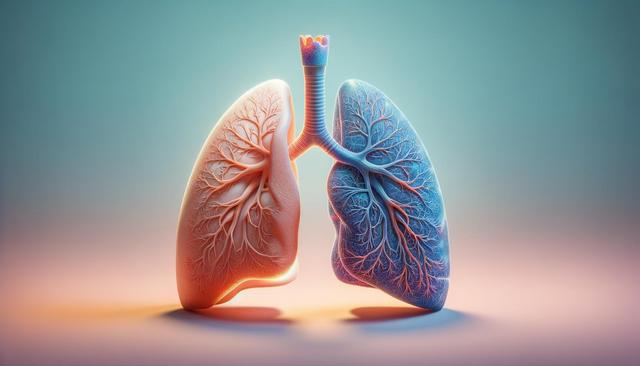Understanding What COPD Is
Chronic Obstructive Pulmonary Disease, or COPD, is an umbrella term used to describe a group of chronic lung diseases that obstruct airflow and make breathing difficult. The two most common conditions included in COPD are chronic bronchitis and emphysema. These diseases damage the airways and the air sacs in the lungs, leading to long-term breathing problems. Over time, the symptoms can worsen, especially if the condition goes undiagnosed or untreated. Smoking is the leading cause of COPD, but long-term exposure to lung irritants like air pollution, chemical fumes, or dust can also contribute to the development of the disease.
Recognizing the early signs of COPD can lead to earlier diagnosis and better management. Common symptoms include:
- Persistent cough, often with mucus
- Shortness of breath, especially during physical activities
- Wheezing or noisy breathing
- Frequent respiratory infections
- Fatigue and reduced ability to exercise
Since many of these symptoms can be mistaken for normal signs of aging or other illnesses, it’s important to pay attention to changes in breathing patterns. Early medical evaluation can make a significant difference in quality of life and disease progression.
Recognizing the Stages of COPD
Could you recognize the signs of COPD? Understanding how the disease progresses through different stages can help individuals and caregivers better manage the condition. COPD is typically categorized into four stages based on the severity of airflow limitation, measured by a test called spirometry. These stages include mild, moderate, severe, and very severe.
Here’s a brief overview of what each stage may involve:
- Mild (Stage 1): Minimal symptoms, such as occasional cough and mucus. Lung function is slightly reduced but noticeable signs may not yet be present.
- Moderate (Stage 2): Increased shortness of breath, especially during physical activity. This is often the stage where people first seek medical attention.
- Severe (Stage 3): Significant breathing difficulties, frequent exacerbations, and reduced ability to perform daily activities.
- Very Severe (Stage 4): Extreme difficulty breathing, chronic respiratory failure, and a high risk of life-threatening complications.
Knowing these stages can help guide treatment decisions and lifestyle changes, ensuring appropriate care is provided at each phase of the disease.
Risk Factors and Prevention
While some risk factors for COPD are unavoidable, such as age or genetic predisposition, many are related to environmental and lifestyle choices. The primary risk factor remains long-term exposure to tobacco smoke, whether through direct smoking or secondhand exposure. Individuals who work in environments with high levels of dust, fumes, or chemicals are also at elevated risk.
Key modifiable risk factors include:
- Smoking or exposure to secondhand smoke
- Occupational exposure to harmful substances
- Indoor air pollution from poorly ventilated cooking or heating
- Frequent respiratory infections during childhood
Preventing COPD involves reducing exposure to these risks. Quitting smoking is the most effective step anyone can take to prevent the onset or progression of COPD. Employers can also play a role by implementing safety measures in workplaces where air quality may be compromised. Regular check-ups and lung function testing are especially important for those in high-risk groups.
Managing COPD: Lifestyle and Medical Treatments
Once diagnosed with COPD, effective management becomes crucial to maintaining quality of life and slowing disease progression. Treatment typically involves a combination of lifestyle changes, medications, and in some cases, medical devices or surgical interventions. The goal is to relieve symptoms, improve exercise tolerance, and reduce the risk of complications.
Common treatment strategies include:
- Bronchodilators to open the airways and make breathing easier
- Inhaled corticosteroids to reduce inflammation
- Oxygen therapy for those with low blood oxygen levels
- Pulmonary rehabilitation programs, which include exercise training and education
Lifestyle modifications also play a significant role. Patients are encouraged to eat a balanced diet, engage in regular physical activity within their limits, and avoid respiratory irritants. Staying up-to-date with vaccinations, such as the flu and pneumonia vaccines, can help prevent infections that often worsen COPD symptoms.
Living Well with COPD
Although COPD is a chronic condition with no current cure, many individuals live actively and meaningfully by following a tailored health plan. Emotional and mental well-being are also integral to managing COPD. Living with a chronic illness can be stressful, and support from family, friends, or professional counselors can make coping easier.
Here are some practical tips for daily living with COPD:
- Monitor symptoms and report any changes to a healthcare provider
- Follow prescribed treatments consistently
- Use energy-saving techniques to avoid overexertion
- Stay socially active to reduce isolation and depression
Support groups and community resources can offer additional help, whether it’s learning how to use oxygen equipment or navigating transportation for medical appointments. With the right support system and proactive health choices, those living with COPD can maintain a sense of independence and well-being.
Conclusion: Taking Control of COPD
Recognizing the signs of COPD and understanding how it progresses allows individuals to take a more active role in their health. Early diagnosis, risk factor reduction, and appropriate treatment can make a meaningful difference. Whether you’re managing COPD yourself or caring for someone who is, staying informed and connected to healthcare support is essential. By focusing on prevention, lifestyle adjustments, and consistent medical care, it’s possible to live well despite the challenges COPD may present.







